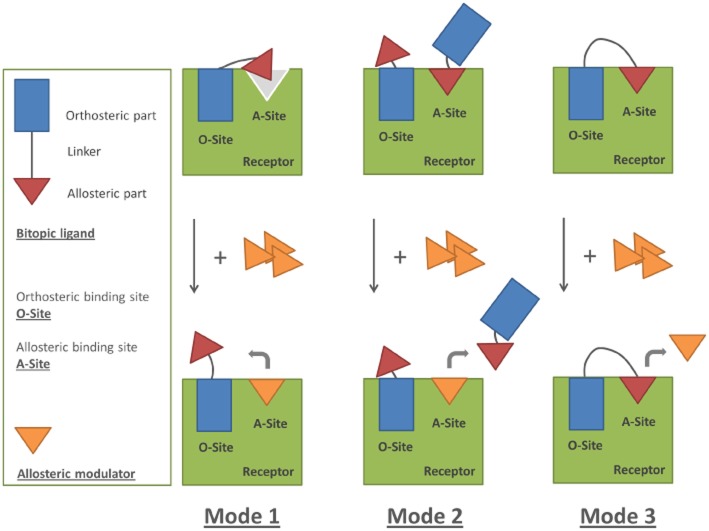Figure 7.
Proposed diagram of three distinct binding modes for the bitopic ligands in the absence or presence of further added allosteric modulator. Mode 1: the linker length of a bitopic ligand is sufficient to occupy both sites on the receptor, yet in a non-optimal manner. Mode 2: the linker length of a bitopic ligand is not sufficient to occupy both sites on the receptor. Two ligands could possibly bind to one receptor with either the orthosteric part to the ‘O-site’ or with the allosteric part to the ‘A-site’ on the receptor. Mode 3: the linker length of a bitopic is optimal to occupy both orthosteric and allosteric sites of the receptor. Upon the addition of excess allosteric modulator, the allosteric modulator can prevent the rebinding of the freshly dissociated allosteric pharmacophore in Mode 1 due to the bitopic ligand's less optimal binding pose or occupy the ‘A-site’ on the receptor and thus ‘displace’ the bitopic ligand binding to the receptor via its allosteric pharmacophore in Mode 2. In contrast, the binding of the bitopic ligand with optimal linker length (Mode 3) is less affected in the presence of the allosteric modulator.

